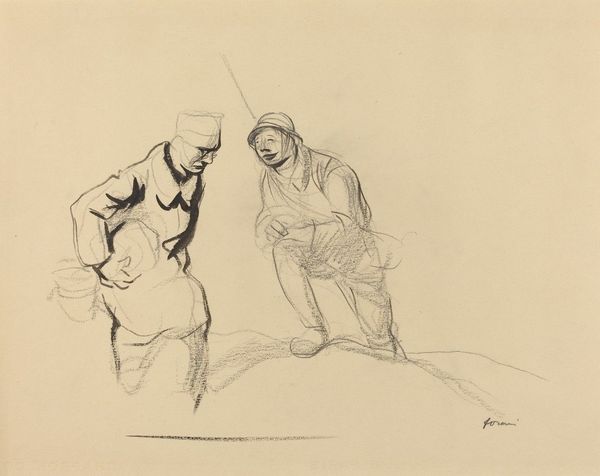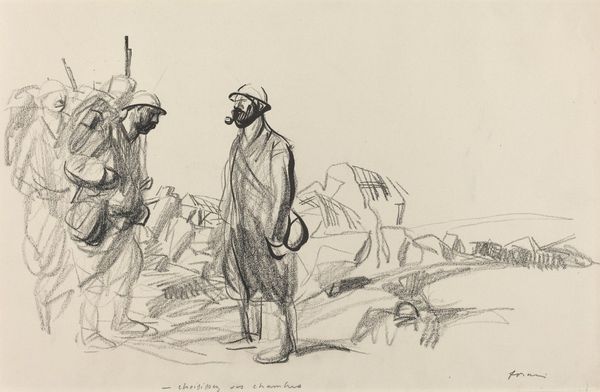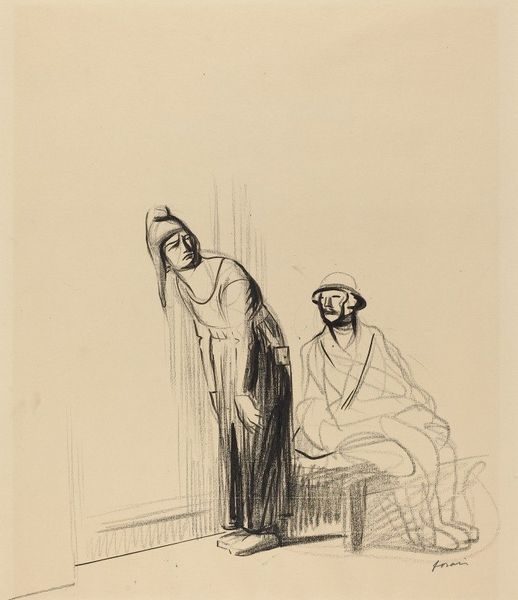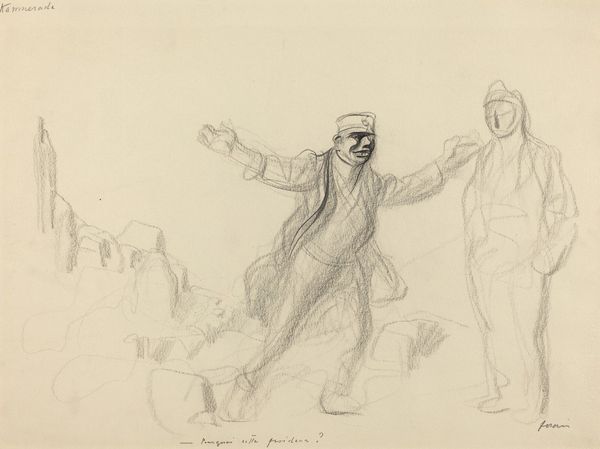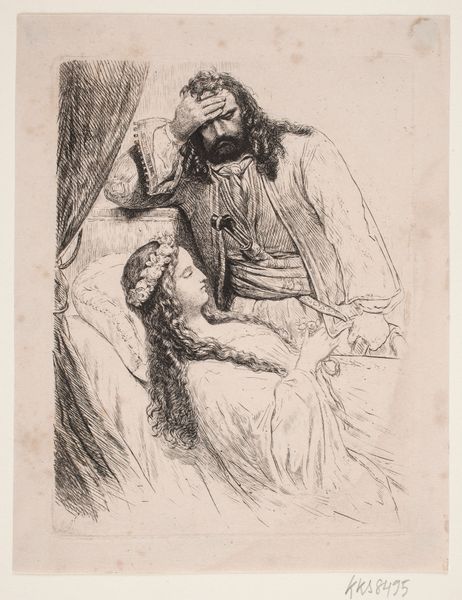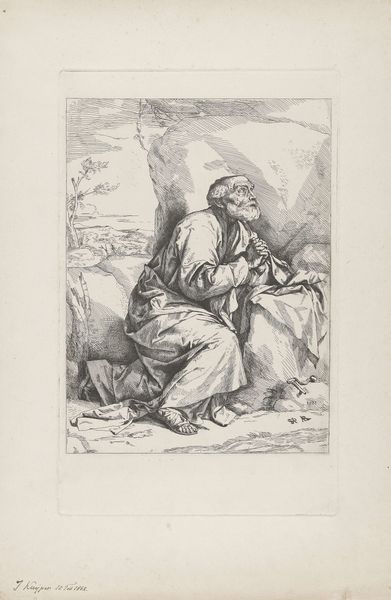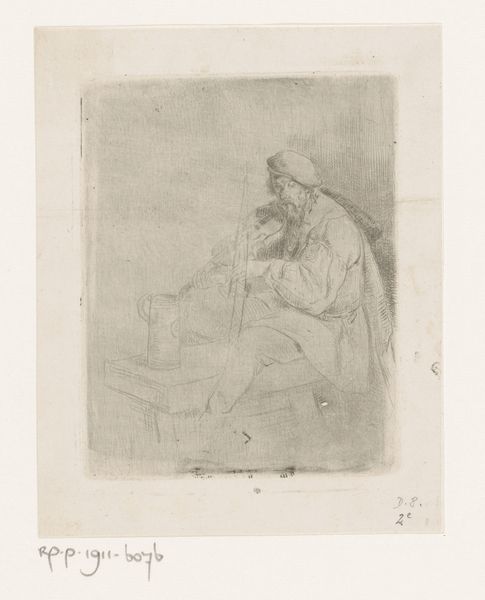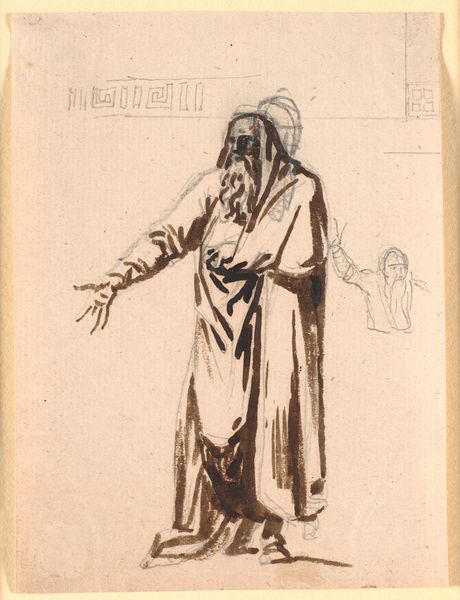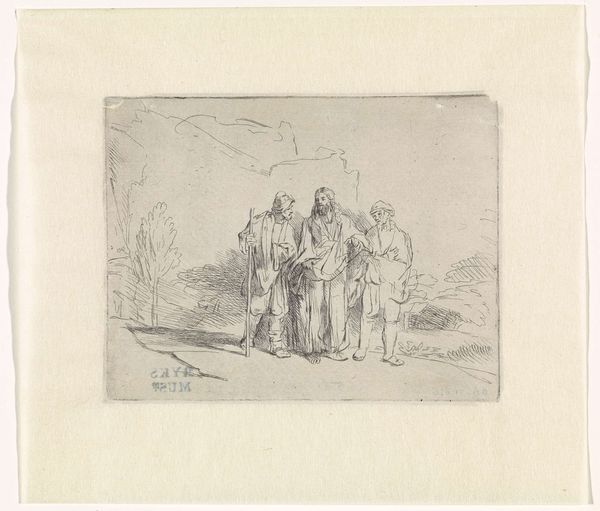
Copyright: Public Domain: Artvee
Curator: Here we have Jean-Louis Forain's "C’est la, que j’ai fini le cure," a drawing from around 1914 to 1919, rendered in ink. Editor: There's something strikingly raw about this. It feels like a glimpse into a heavy, almost unbearable moment. Is that a crucifix? The whole thing has this unfinished quality that enhances its emotional impact. Curator: Absolutely, the crucifix anchors it, doesn’t it? Forain often explored themes of social commentary and the human condition. I imagine this was completed during a period of intense upheaval, likely related to the First World War. Editor: The medium emphasizes the mood. Look at the paper, the bleeding of the ink. It looks cheap and readily available, something he could access quickly and get these images out, as documents. Curator: Exactly! It mirrors the urgency and transience of the scene. The stark lines and shading bring an intense realism, amplified by the vulnerability depicted in the man's upward gaze. Editor: That soldier— his form is rough, suggestive. The material of his uniform seems almost… absent, like its texture isn't relevant next to what appears like profound spiritual or psychological despair. What was the war production of ink during that period? We need to consider this in relation to production capacity at the time. Curator: Good point. Beyond just documenting a scene, Forain might be prompting a conversation about faith, resilience, or even the breaking points that war inflicts on the individual. It almost suggests that even the staunchest belief systems might be tested when confronted with human suffering. Editor: The layering is significant. This work is really all about layers of loss - literally constructed from layering different amounts of ink that, when mass produced and disseminated, may have functioned to illustrate layers upon layers of lost materials and labor on the battle field. Curator: In the end, what resonates is the power of simple lines to evoke complex emotions. We’ve walked away with not just an appreciation for the art, but hopefully a richer understanding of the context that breathes life into it. Editor: Indeed. Material constraints in art can be seen as reflections of larger societal pressures, so that ink reveals so much more.
Comments
No comments
Be the first to comment and join the conversation on the ultimate creative platform.



